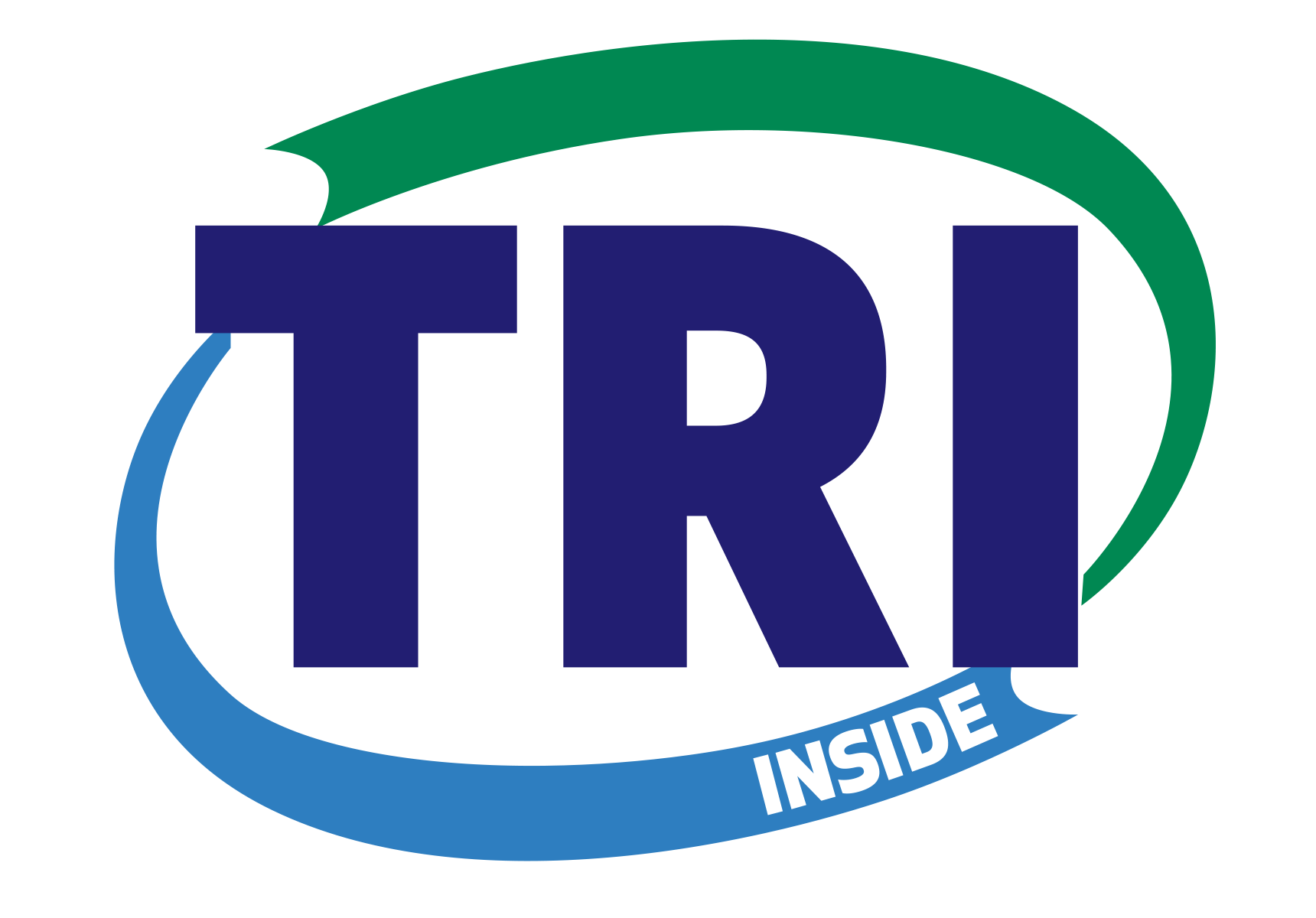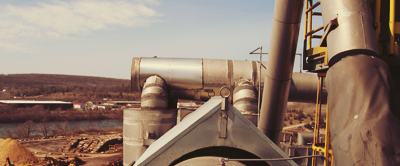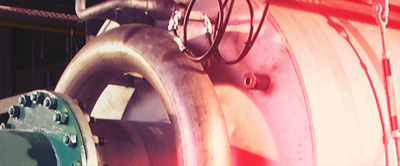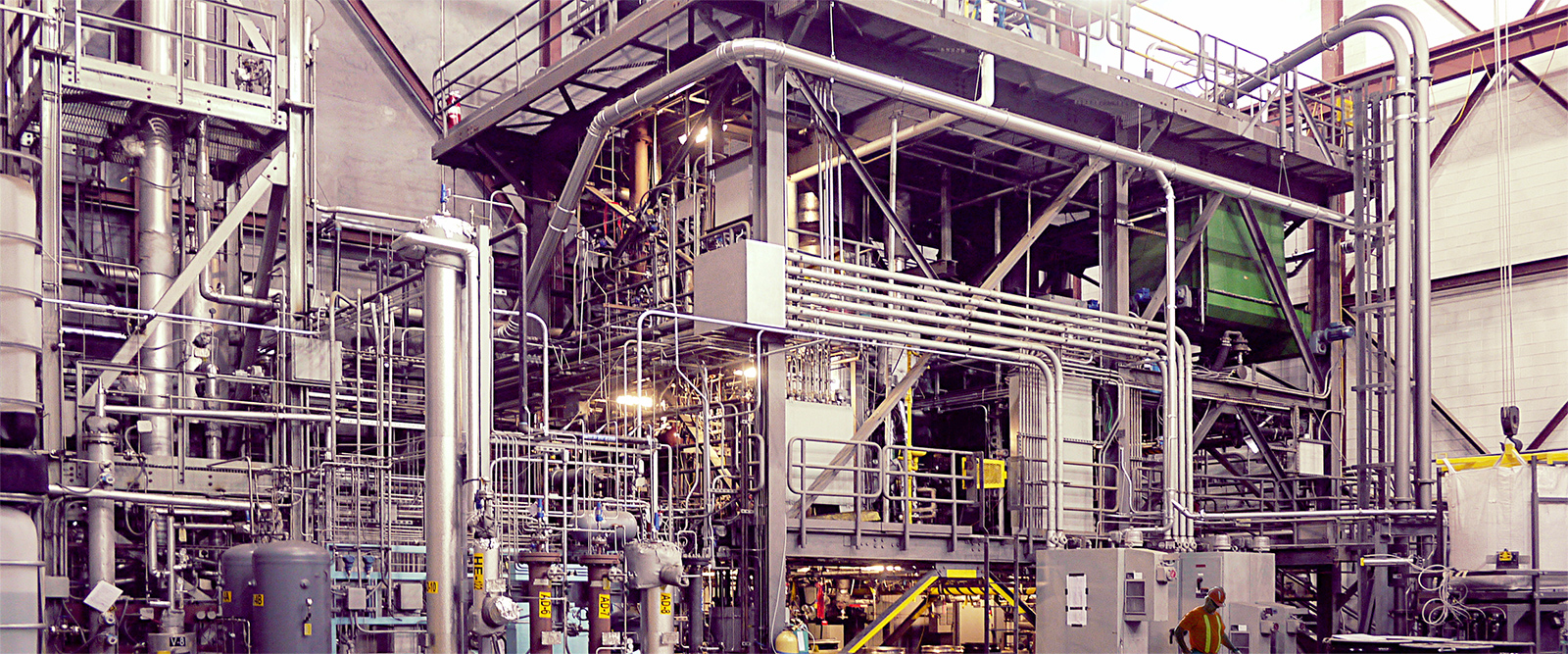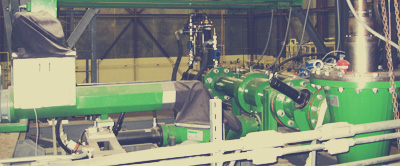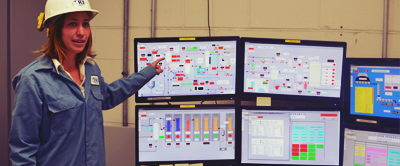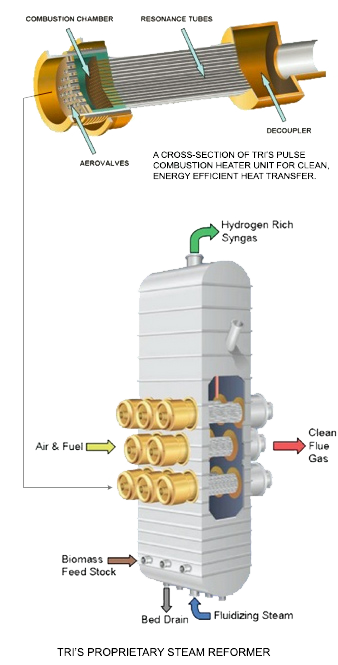Industry analysts believe the thermochemical process is the only currently available integrated biorefinery technology that can process multiple feedstocks, be built on varying scales, achieve high-conversion efficiencies and be rapidly replicated.
Gasification is a thermochemical process that converts any carbon-containing material into a synthesis gas (“syngas”) that can be used as a feedstock:
- to make value-added biofuels and biochemical,
- as a fuel for combined cycle power generation, or
- as a replacement for fossil fuels including coal, fuel oil and natural gas.
The biomass feedstock reacts in the TRI steam reforming with steam and heat in a reducing (oxygen-starved) atmosphere to produce syngas made up primarily of hydrogen, carbon monoxide, carbon dioxide and smaller quantities of methane and other hydrocarbons.
TRI’s indirectly heated steam reforming process utilizes modular pulse combustion heaters (see PC Heater animation) in a steam-driven bubbling fluidized bed vessel (see TRI Steam Reformer animation). Heat required to achieve reformer operating temperature and for the endothermic steam-reforming reactions is supplied by pulse heaters which are immersed in the fluidized bed.
A portion of the syngas or tail gas generated by the biorefinery is burned in the pulsed heaters to supply the necessary endothermic heat, thereby making the steam reformer energy self-sufficient, operating on its own energy. Pulsations in the resonance tubes produce a gas-side heat transfer coefficient which is several times greater than a conventional fire-tube heater. This efficient heat transfer reduces the size and cost of the heat exchangers and reformer gasification vessel. The hot combustion gases leaving the pulsed heaters are sent to a heat recovery steam generator (HRSG) to generate steam.
The hot syngas from the reformer is cleaned using a proprietary configuration of proven technologies which TRI has trademarked as KASyn™. In this system, the raw syngas from the steam reformer is passed through cyclones to remove particulate matter, cooled in a second HRSG, and then quenched and cleaned in a series of gas clean-up stages. The clean syngas can then be used to produce green fuels and chemicals, produce combined cycle energy or replace fossil fuels.
Download to read more For more information on how the TRI Steam Reformer works, download “How it Works.”
The animation videos below show how the Pulse Combustion Heater, the Steam Reformer, and the cyclone system work to provide the highest quality syngas free of particulates.

